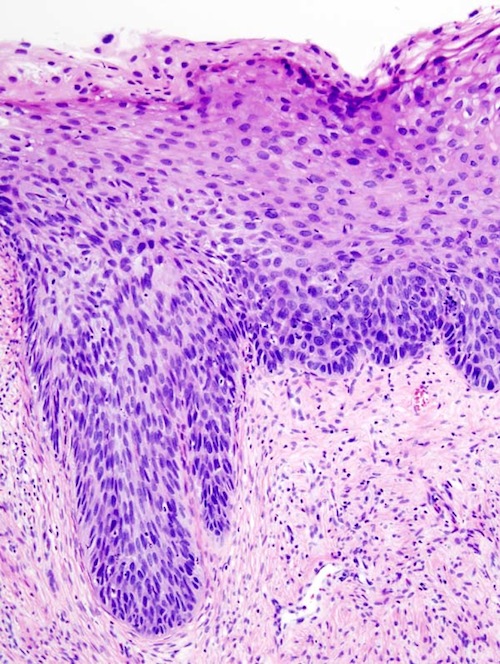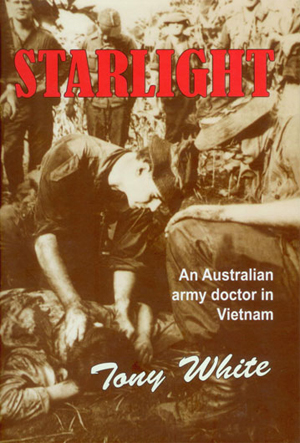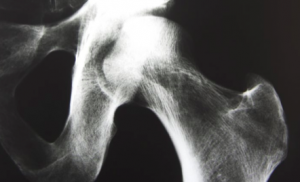Early intervention in youth psychosis has been a topic of contentious discussion. In particular, there is a lack of consensus regarding how early to treat patients with a psychotic disorder. There has been a recent push to provide treatment early in the development of psychosis, specifically to patients in an ultra-high risk or prodromal stage. There is also debate about the types of interventions that should be used, such as psychoeducation, psychotherapy and pharmacotherapy. In Australia, these uncertainties have been reflected by the production of conflicting guidelines by key stakeholders in this area. There are significant arguments both for and against the practice of early intervention. This article explores these arguments and reviews current practices in Australia. A number of updated recommendations are also set out in accordance with the findings of this article.
Introduction
 Psychotic disorders are characterised by the presence of symptoms that reflect an excess or distortion of normal functions. For example, hallucinations, delusions, thought disorder and disorganised behaviour are symptoms characteristic of psychosis. Patients diagnosed with schizophrenia must demonstrate positive symptoms or severe negative symptoms (e.g. flattened affect, social withdrawal) in addition to deterioration in their social and vocational functioning. [1] Hence, the diagnosis is typically made after the onset of significant symptomology.
Psychotic disorders are characterised by the presence of symptoms that reflect an excess or distortion of normal functions. For example, hallucinations, delusions, thought disorder and disorganised behaviour are symptoms characteristic of psychosis. Patients diagnosed with schizophrenia must demonstrate positive symptoms or severe negative symptoms (e.g. flattened affect, social withdrawal) in addition to deterioration in their social and vocational functioning. [1] Hence, the diagnosis is typically made after the onset of significant symptomology.
McGorry et al. [2] argue that late-stage diagnosis of a psychotic illness leads to delayed and inconsistent management of these patients. The concept of “early intervention” refers to appropriately managing patients in the early stages of psychotic disease, to minimise long-term negative social and psychological outcomes. As such, it represents a secondary prevention strategy and a paradigm shift in the way schizophrenia and other psychotic disorders are viewed; rather than being seen as illnesses with an inevitably poor social and functional outcome, they are viewed as conditions whose course can be altered
by recognition of the early warning signs and application of timely intervention. [2] The proponents of early intervention argue that many of the recognised risk factors for the development and progression of a psychotic disorder (e.g. disrupted peer and family networks, substance A review of early intervention in youth psychosis use, depression) are recognisable in advance and can be acted upon. [2]
The clinical staging model [3] proposes that psychiatric illnesses should be viewed as a sequence of stages that increase in disease severity. Employing the appropriate treatment modality at a particular stage would allow regression of the disease to an earlier stage. The clinical stages of early psychosis include the ‘ultra-high risk’ stage, the ‘first psychotic episode’ stage and the ‘first 5 years after diagnosis’ stage. [2]
The ‘ultra-high risk’ stage is the stage preceding the first psychotic episode. Although the first psychotic episode is often the first recognised sign of a psychotic illness, retrospective analysis reveals many changes occur in an individual’s thoughts and behaviour in the period preceding the psychotic episode. This is known as the ‘prodromal phase’. To intervene at this stage, it is clearly necessary to be able to identify this period in advance, and a considerable research effort is being focused on developing prospective criteria for this purpose. Two tools currently in use are the Positive and Negative Syndrome Scale (PANSS) or Attenuated Positive Symptoms (APS) approach and the Basic Symptoms (BS) approach. [4] The PANSS is a 30-point questionnaire with a 7-point rating for each question. It covers positive symptoms (e.g. delusions, hallucinations), negative symptoms (e.g. social withdrawal, blunted affect) and general symptoms of psychopathology (e.g. depression, poor insight, feelings of tension). [5] The Basic Symptoms approach focuses on subtler, self-experienced subclinical symptoms such as thought interference, disturbance of receptive language, inability to divide attention between tasks and derealisation. [6]
Intervention at the ‘first psychotic episode’ stage is largely aimed at reducing the duration of untreated psychosis (DUP), as a high DUP has been shown to result in poorer outcomes. Some authors have argued that untreated psychosis can lead to irreversible brain damage. [7,8] Although this theory has yet to receive widespread support, the personal, social and societal consequences of untreated psychosis can have a tremendous impact on the patient’s ability to recover from the episode. [2] Functional MRI brain imaging studies have shown decreased memory encoding in patients with schizophrenia and interestingly, decreased posterior cingulate activity in patients with ongoing first-episode psychosis compared to those showing remission at one year. [9] Such alterations in brain activity in patients more likely to proceed to a significant psychotic illness has exciting implications for the use of fMRI as a tool in screening for patients most likely to benefit from early intervention.
The ‘first 5 years after diagnosis’ stage is a crucial period that determines a patient’s long-term outcome. It is the time most likely to result in suicide, disengagement, relapse, [2] long-term treatment resistance and the break down and accumulation of disabilities in personal, social and occupational settings. [10] Mason et al. [11] suggest that the level of disability accumulated in the first 2 years of psychosis may in fact ‘set a ceiling for recovery in the long term’. Hence, intervention at this period is important. Maintaining a steady support structure especially tailored towards young people receiving a diagnosis of psychosis is likely to maximise chances of engagement with mental health care, life-style modifications, and adequate family involvement. [2]
Current Practice
There are currently a number of different practices/guidelines in Australia relating to early intervention in youth psychosis. The Royal Australian and New Zealand College of Psychiatrists (RANZCP) has produced clinical practice guidelines for schizophrenia, which include recommendations for patients at ultra-high risk (UHR). [12] Orygen Youth Health and headspace have also developed guidelines, called ‘The Australian Clinical Guidelines for Early Psychosis’, which are now in the second edition. [13]
Australia has established the first clinical and research clinic in the world for individuals considered to be at imminent risk of psychosis. The Personal Assessment and Crisis Evaluation (PACE) clinic was established by Orygen in Melbourne in 1994. [14] The clinic receives referrals from general practice, school counsellors and various health services. [14] They facilitate case management and provide a variety of in-house support services to families and carers including group programs, vocational and educational assistance, and occupational therapy. [15] Orygen, in conjunction with the Australian General Practice Network, the Australian Psychological Society and the Brain and Mind Research Institute also established headspace, which is a national youth mental health foundation. [16] The aim of headspace was to facilitate early intervention by increasing community awareness, clinician training and taking a youth-specific approach to management, as well as utilising multidisciplinary care. [16,17] Another service available is the Early Psychosis Prevention and Intervention Centres (EPPIC). In the 2010-11 and 2011-12 budgets, the Federal Government allocated $247m to the establishment of a network of 16 of these centres across Australia, modelled upon Orygen’s EPPIC centre in Melbourne. [18] A more detailed summary of the current guidelines/practices existing in Australia for youth psychosis is listed in Table 1.
Table 1. Current practice (guidelines and health services) in Australia for youth psychosis.
| RANZCP Clinical Practice Guidelines for the Treatment of Schizophrenia and Related Disorders (2005) [12] | Assessment and close monitoring every 2-4 weeks along with the provision of information to the patient and their family about the risk and likelihood of progression. Other techniques such as cognitive behavioural therapy (CBT), stress management and vocational rehabilitation should be employed depending on any concurrent psychosocial difficulties. Antipsychotics are only to be prescribed when the patient has been frankly psychotic for over a week, or in cases when milder symptoms are associated with a risk of self-harm or aggression (however, patients without such a history are often treated regularly with antipsychotics and the primary concern here is that they may have a delirium or physical illness, which should be excluded first). [12] |
| The Australian Clinical Guidelines for Early Psychosis [13] | Commencement of CBT for all patients identified as being at ultra-high risk is recommended. Family, vocational, educational and accommodation support should also be provided as required in a low stigma setting. Antipsychotic medication should only be considered once full threshold psychotic symptoms have been sustained for over a week, or if there is rapid deterioration accompanied by psychotic-like symptoms. [13] |
| The Personal Assessment and Crisis Evaluation (PACE) clinic | PACE provides information to individuals and their families about what it means to be at risk of psychosis. [14] They facilitate case management and provide a variety of in-house support services to families and carers including group programs, vocational and educational assistance and occupational therapy. [15] Specific treatment is largely in the form of voluntary participation in clinical trials, such as those looking at antipsychotic use or CBT in ultra-high risk individuals. [14] |
| Headspace | These centres for 12-25 year olds combine specialist mental health, drug and alcohol and primary care services, vocational services and training, and employment support within a youth and family-friendly environment. [16,17] Headspace centres are also tasked with developing awareness campaigns for their local community and providing training for primary care and other workers using an evidence-based approach. [16] |
| Early Psychosis Prevention and Intervention Centres (EPPIC) | Provide comprehensive in-patient and mobile components and aim to identify patients as early as possible and deliver phase-specific bestpractice interventions to psychotic individuals between the ages of 15 to 24. [19] This model has also been adopted widely around the world, including in the UK [20] and the US. [21] |
The early intervention model has also been subject to some criticism. The major basis for this is a lack of evidence, especially with regard to the use of anti-psychotics in the prodromal stages of psychotic illness and the significant cost associated with creating a clinical infrastructure for patients who may never proceed to a long-term psychotic illness.
Results and Discussion
Evidence for early intervention
There is evidence from several small studies that psychotherapy such as CBT [22] and pharmacotherapy [3,23] can reduce the progression of ultra-high risk individuals to first episode psychosis.
Wyatt et al. [8] reviewed 22 studies, of varying study designs, which included contemporaneous control group studies, cohort studies, mirror image studies and early intervention studies. In these studies, patients with schizophrenia were either given or not given neuroleptics at a specific time during the course of their illness. 19 of the studies, in particular, looked at patients who were experiencing their first psychotic episode. After re-analysing the data, Wyatt et al. [8] showed that early intervention with a neuroleptic in first-break schizophrenic patients improved the long-term course of the illness, commonly assessed based on re-hospitalisation and relapse rates. It was also shown that with the use of neuroleptics, the length of the initial psychotic period was reduced. In addition, when neuroleptics were discontinued, it resulted in poorer outcomes as the patients were not able to return to their previous level of functioning and relapses occurred more frequently. Neuroleptic medication has the strongest support for relapse prevention in schizophrenia and is the basis of most interventions.
It has been suggested that the duration of untreated psychotic episodes directly correlates with less complete recovery, a higher rate of relapse and increased levels of compromised functioning, since these episodes have a toxic effect on the brain. [7,8,24-26] These studies, both retrospective and prospective, suggest that a longer DUP in the early stage of schizophrenia is associated with a longer time to remission, a lower level of recovery, a greater likelihood of relapse and a worse overall outcome.
Studies have shown that raising public awareness and using mobile outreach detection teams to identify candidate patients [27] has significantly reduced DUP, leading to beneficial outcomes. In particular there has been a reduction in negative symptoms in schizophrenic patients.
Arguments against early intervention
There are certain groups who are against early intervention. One of the arguments against early intervention relates to whether it is cost effective, as resources may be diverted from treatment programs for patients who already have an established diagnosis of psychosis. In addition, they argue that the great majority of high-risk patients do not in fact progress to frank psychosis. There is also the argument that some patients seeking early intervention may not have ‘true prodromal’ features, thus inflating the numbers of those who actually require early intervention. These arguments are discussed in more detail below.
Economic cost of early intervention may be infeasible
Those against early intervention believe the increased attention and funding given to early intervention diverts funding away from treatment in those with established psychosis. [28-30] They also argue that proponents of early intervention have touted the cost-effectiveness of early intervention as such programs utilise more outpatient resources compared to inpatient resources, thus reducing overall healthcare costs (with outpatient services being much cheaper than inpatient treatment). However, critics of early intervention have pointed out that implementation of a cost-effective treatment actually increases total costs [31,32] since cheaper treatment would have a much higher uptake compared to an expensive alternative, thus raising the total cost of treatment. In addition, Amos argues that total healthcare costs are further increased since in-patient costs are not reduced with early intervention. [33] This is because 80% or more of hospital costs are fixed costs and by shifting psychosis treatment to largely outpatient settings in the community, community costs increase but hospital costs are not reduced. [33] This is corroborated by previous studies, which show an increase in total costs when hospitalisation rates had been reduced. [34,35]
Most high-risk patients do not progress to frank psychosis
One possible explanation for this is that a subset of adolescents whom are identified as being UHR may just be odd adolescents that become odd adults with few progressing to a frank psychosis. The prominent child psychiatrist Sula Wolff was the first to describe these odd adolescents in her book, Loners: The Life Path of Unusual Children. [36] Her research has shown that while odd qualities such as those found in schizoid and schizotypal disorders are found pre-morbidly in patients with schizophrenia, very few children with such personality traits/disorders go on to develop schizophrenia. For example, in 1995 Wolff undertook a records survey of all psychiatric hospital admissions in Scotland. Overall, 5% of schizoid young people were affected by schizophrenia in adulthood compared to a population prevalence rate in the UK of 0.31-0.49%. [36] These numbers suggest that while the risk for schizophrenia in schizoid children is higher than that of the general population, it is still low. To reiterate, there may be a proportion of patients who are flagged as being prodromal but whom actually have qualities consistent with schizoid personality disorder that will never progress to psychosis.
Recently, there has been a decline in the proportion of patients at high risk of psychosis actually progressing to frank psychosis
This decline has important ramifications for the practice of early intervention. A decline in the transition rate of patients identified as UHR has been reported within the PACE clinic (Melbourne, Australia) and in other UHR clinics as well. [37,38] As an example, The PACE clinic has reported that each successive year between 1995-2000 had a rate equal to 0.8 of the previous year. [38] The reported decline in transition rate was not due to differing patient characteristics across the years, such as gender, age, family history, baseline functioning and degree of psychopathology and psychiatric symptoms. [38] Additionally, the UHR criteria remained unchanged in the PACE clinic between 1995-2000. [38]
There are a number of possible explanations for the declining transition rate to psychosis. Firstly, UHR patients are being detected more quickly than in the past (the duration of symptoms prior to detection is getting shorter). [38] However, it is unclear whether the resulting decline in transition rate is due to earlier treatment (which may be more effective than delayed treatment), the identification of increased numbers of false positives (those who are not going to progress to psychosis) or a combination of both. [38] There may also be an effect from clinicians becoming better at managing UHR patients. [38] Additionally, it has been noted that the decline in transition rate was more prominent for patients who met two of the UHR inclusion criteria simultaneously compared to those who met only one of the criteria. [38] This could have been due to the increased emphasis which was placed on detection of patients who met both criteria, both in the UHR clinic and from referrers, thereby leading to earlier detection and treatment. [38] This is also in keeping with the wider community shift and preoccupation towards early psychosis and its recognition, and the increase in available referral pathways.
The decline in transition rate also raises questions about the validity of intervention approaches, such as pharmacotherapy and psychosocial treatment, on patients who may not ultimately transition to psychosis. [38] Such intervention may be harmful and therefore unjustified in this context. The UHR concept, which is used extensively in psychosis research, may also have to be re-visited if many of the identified patients are not transitioning. [38]
Due to the uncertainties regarding the basis for the declining transition rate, a review of the role of UHR clinics may be warranted. [38] It may be necessary to initially monitor patients and treat conditions such as depression, substance use problems and anxiety disorders while withholding antipsychotic treatment until features suggestive of transition occur, such as worsening of sub-threshold psychotic symptoms. [38] This may be prudent in the context of detecting increasing numbers of patients who were never destined to transition to psychosis. In any case, further research is needed to clarify the ongoing uncertainties in this area.
Bias in patient selection
Specialised teams set up to treat early psychosis engage with anyone who is seeking help. However, Castle [39] believes that this would skew the treatment group, as it would engage those with help-seeking behaviours rather than prodromal psychosis. Furthermore, it also raises the issue that those seeking help may have signs and symptoms of what is a normal developmental process or a ‘psychosis proneness’, which is part of a normal distribution within the general population. [40] Thus, these individuals may not require treatment for psychosis at all as they would either grow out of ‘psychotic proneness’ or would
stabilise and never develop psychosis.
Prescribing anti-psychotics to a population that is not psychotic: An ethical implication
The potential dangers of psychotropic drugs on young people are outlined in the United Nations Convention on the Rights of the Child, where children are recognised as being particularly deserving of protection from unnecessary exposure to psychotropic substances. [41] However, much of the research into early intervention includes administration of a low dose of antipsychotics as a crucial and efficacious treatment option. [42] Furthermore, antipsychotics are known to have serious side effects including sedation, weight gain, mild sexual dysfunction and disconcerting extrapyramidal symptoms (EPS) such as pseudoparkinsonism, akathisia, acute dystonia, and tardive dyskinesia. [43] While these effects have a stronger association with first generation antipsychotics, there is increasing evidence suggesting that second generation antipsychotics (SGA) are associated with significant side effects such as weight gain, hyperprolactinemia and EPS in the adolescent population.
Summary and recommendations
In view of the currently available literature, the authors make the following summary and recommendations with regards to early intervention in psychosis.
- Psychosis is a highly disabling condition with detrimental impacts on patients’ relationships and occupational and social functioning
- Possible interventions that delay or prevent transition from the prodromal period to psychosis are important, both clinically and economically
- A systematic review by the Cochrane Database found limited evidence about interventions to prevent psychosis. Despite this, early intervention facilities such as headspace are widespread in Australia
Our recommendations
- We do not recommend the use of antipsychotics in children and adolescents who have been identified as at increased risk but who have not yet progressed to frank psychosis. Exposing children and adolescents to the serious side effects of antipsychotics is both unethical and inappropriate considering a proportion of these patients will not progress to psychosis.
- We recommend more research into safer, less harmful interventions such as omega-3 fatty acids and psychotherapy. For omega-3 fatty acids, evidence suggests a beneficial effect on transition rates compared to placebo. [44] However, this evidence comes from a single trial with few participants. A replication study with a larger sample size is needed to more definitively ascertain the merit of this intervention
- As previously discussed, preliminary evidence shows that CBT may reduce the transition rate to psychosis. Further research should be undertaken to conclusively establish the benefit of psychotherapy in high-risk individuals. Further research should
include investigation of the cost-effectiveness of psychotherapy as an early intervention for youth psychosis. In addition, research should aim to identify any detrimental effects associated with providing psychotherapy to patients who do not progress to psychosis. - Patients identified as being at risk of developing psychosis should be monitored closely by a multi-disciplinary team. Team members may include a general practitioner, social worker, psychiatrist and psychologist. By closely monitoring at-risk patients, their progression into frank psychosis can be detected earlier and appropriate treatment given in a timely manner. Prompt detection and treatment of psychosis is crucial, as delayed untreated psychosis has been shown to result in poorer outcomes.
Table 2. Summary of the evidence supporting and arguments against early intervention in psychosis.
| Evidence supporting early intervention | Evidence from small studies showing psychotherapy such as CBT and pharmacotherapy can reduce the progression of ultra-high risk individuals to first episode psychosis.Studies show that raising public awareness and using mobile outreach detection teams to identify candidate patients significantly reduces the duration of psychosis. |
| Arguments not in favour of early intervention | The economic cost of early intervention may be infeasible.Most patients identified as being high risk do not progress to frank psychosis.Treatment teams for early psychosis may disproportionately target patients with “help seeking behaviour” and thereby treat more patients who simply display signs and symptoms of a normal developmental process or “psychosis proneness”.The negative ethical implications associated with prescribing antipsychotics to a population that is not psychotic. |
Acknowledgements
The authors would like to thank Professor Jeff Cubis and Professor David Harley for their guidance and expert opinion on the matter.
Conflict of interest
None declared.
Correspondence
H C Y Yu: u4788941@anu.edu.au













